Meeting Report
5th Annual Meeting of NGFN-Plus and NGFN-Transfer in the Program of Medical Genome Research in Heidelberg, December 11-13, 2012
From 11th -13th of December 2012 the leading scientists of Medical Genome Research met for the 11th Annual Meeting of the German National Genome Research Network (NGFN).
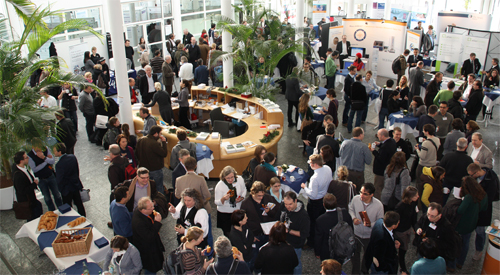
430 participants took the opportunity of spending three days of high quality scientific discussions and to exchange ideas in the romantic city of Heidelberg - world-famous for its Castle and Germany’s oldest university as well as for being a most excellent scientific research location. In the bright and friendly atmosphere of the Communication Center of the German Cancer Research Center (DKFZ) a particularly international program was presented featuring outstanding speakers from global genome projects with relation to the NGFN as well as the latest results of genome research within the NGFN. The program covered an impressive range of top results from the genome research community shown in 41 scientific talks and 164 accompanying poster presentations giving a deep insight into cutting-edge medical genome research.
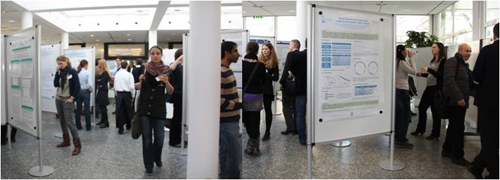
The conference opened with two satellite workshops on Tuesday 11th, focusing on Small RNAs, organized by NGFN scientists Jürgen Brosius and Jürgen Haas, and Next-Generation Sequencing, chaired by Stefan Wiemann and Bernd Timmermann. More than 150 participants attended the symposia about the great advancements in these research fields.
The Main Program started with the International Projects in the Program of Medical Genome Research. Internationally renowned experts gave insight into the state of the art of the International Cancer Genome Consortium and the 1000 genomes project. Also global genome projects with relation to the NGFN were presented such as the Alzheimer’s Disease Genetics Consortium (ADGC), the International Human Epigenome Consortium (IHEC), the International Knockout Mouse Consortium (EUCOMM) and The International Mouse Phenotyping Consortium, (EUMODIC).
A special highlight of the meeting was the Evening Lecture given by Randolph Nesse from the University of Michigan, on aspects of evolutionary medicine. The field tries to understand why natural selection has left the body vulnerable to diseases. In his talk Professor Nesse discussed the question why our human bodies are not a result of design but of evolution. He gave examples such as the blemishedly designed human eye with its “blind spot”. In the back of the eyeball there is a small area where the blood vessels and the nerves enter the eye through a hole, the “blind spot”, completely blocking incoming light from being captured. Whereas there are animals with excellent eyes who do not know this problem at all, such as octopi. Another example Dr. Nesse gave is pain in the back, due to the construction of the spine which is not made for the upright walking position. Dr. Nesse points out that evolutionary medicine doesn’t tell us what to do, it tells us what questions to ask, and what studies need to be done; it applies every aspect of evolutionary biology to every problem in medicine and public health.
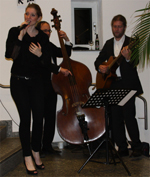
Furthermore, the subsequent ”Get-Together” was a wonderful opportunity to discuss the presented talks of the day in a relaxed atmosphere with great wine, finger food and life music played by the band “Perret-Bugert-Gramm“.
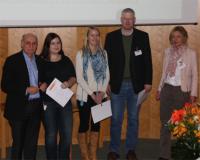
A special interest aroused the talk given by Rudi Balling in which he showed his work on the construction of a Parkinson disease map on Wikipath. With this text mining-based map there will be access to Prakinson related literature and expertise-based curation network analysis as well as sequencing data.
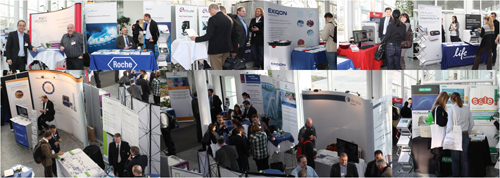
The Meeting was accompanied by a large industry exhibition as well as satellite sessions. The companies with relevance to the field of medical genomics had the possibility to present their latest technological developments, innovations and products.
In his closing remarks, Markus Nöthen thanked all guest speakers, organizers and participants for the very successful and scientifically stimulating NGFN conference 2012.

The Meeting was accompanied by a large industry exhibition as well as satellite sessions. The companies with relevance to the field of medical genomics had the possibility to present their latest technological developments, innovations and products.
In his closing remarks, Markus Nöthen thanked all guest speakers, organizers and participants for the very successful and scientifically stimulating NGFN conference 2012.
- Flyer (524.3KB)
- Abstract Book 2012 (3.3MB)



